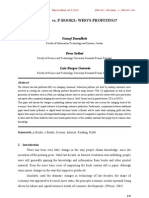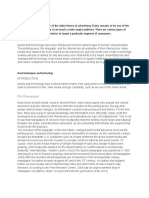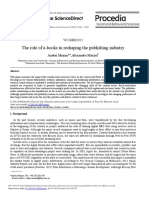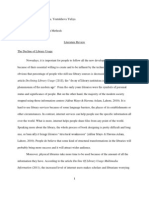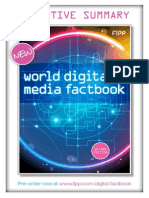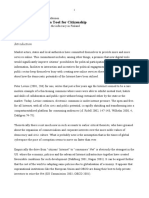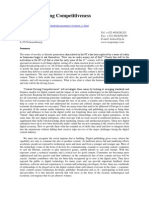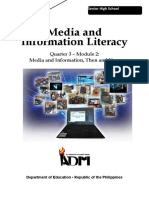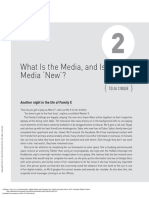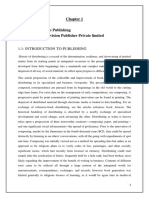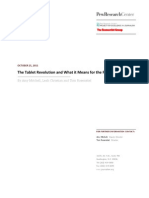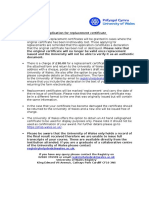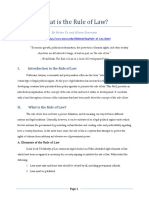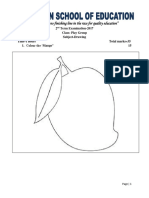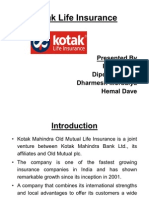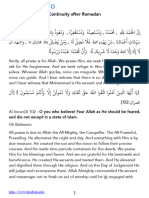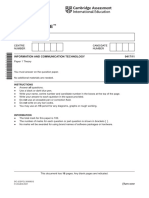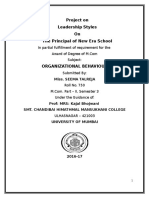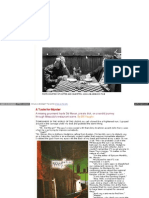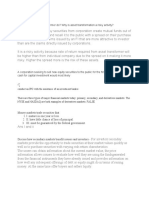Newspapers in the changing media world
Kristiina Markkula, 7.8.2012 (Kristiina.markkula@vkl.fi)
I am happy to be able to speak about newspapers and their future to enthusiastic readers and
professionals.
My background is in newspapers, though today I work as a Project Director for the
Federation of the Finnish Media Industry. For thirteen years, I worked at the Finnish
Newspaper Association and I still work a grest deal with newspapers.
Content
Newspapers situation today globally and in Finland
Next Media project
eReading Services as a part of media business
Business models
Media experience
Enabling technologies
Lessons learned
Newspapers today
Global view
Bill Gates and many others have said that printed newspapers will be dead by the year 2000.
Now we can see that this is not true and I do not believe that printed newspapers will be dead
during our lifetime. The balance between printed and digital newspapers will change over
time. But no-one dares to forecast when that will happen.
The latest forecast says that newspaper circulation will grow by 13 % globally. That is a lot,
but it includes daily and non-daily newspapers, as well as free newspapers. But if we look at
the different parts of the world, newspaper circulation is growing in Asia and in Souht
America. In most European countries, circulation is steady or slightly decreasing, as in
Finland.
It is good to keep that in mind that global newspaper readership is 37.5 % and that there is
25 % more newspaper readers than Internet users.
Finland was in second place in the world, when circulation per 1,000 inhabitants was
counted in 2009. Norway was first.
Finland has been in the top three for as long as I can remember.
Global advertising trends
1
�Newspapers get about half of their income from advertising, so advertising income is very
important. Though global advertising revenue is forecast to grow by 31 % from 2011 to 2015,
newspapers are not the winners.
The winners are the Internet and television. Both wired and mobile Internet has increased its
share from 9 % to 19 % in five years and television by 2 % in the same period. Newspapers
have lost 8 %.
Google, Yahoo, Facebook and YouTube and so on are the biggest players in online
advertising. Not the traditional media.
Situation in Finland
In Finland there are about 195 paid newspapers and about 80 free newspapers.
Newspaper circulation has been decreasing slightly in recent years. The total circulation is
2.7 million copies. The decline in circulation was 2.9 % in 2011 compared to 2010. Finnish
ABC (Finnish Audit Bureau of Circulations ).
Readers behaviour does not change as quickly as we tend to believe. Short-term changes are
overestimated and long-term changes underestimated.
The total reach figure is the average number of readers of a newspaper number, plus the
average number of weekly viewers of the online newspaper or so-called net reach, where one
person can be in the figures only once. 40 newspapers participate in the KMT survey.
Total newspaper reach (both print and online) is over 90 % in the age group over 20 years
and 82 % in the age group 12 to 19 years.
What newspapers are doing
Newspapers are active on digital platforms. Nearly all Finnish newspapers have online news.
About 120 have a digital version of the printed paper (in PDF format, for instance).
The first newspaper to get an iPad version was Helsingin Sanomat, the biggest daily
newspaper in Finland. About 10 dailies have a tablet computer version. Some regional and
local newspapers have PDF versions or similar for tablets.
Newspaper reading on smart phones or tablets has grown rapidly during the last year. The
reasons for this are that newspapers have developed their online services, thet consumers
have gotten more suitable devices and that the time is right.
The biggest newspapers have seen a growth of over 200 % during the last year, users being
mostly young, male and highly educated.
Challenges
2
�The challenge is the same to every media, competition for readers time. There are many
more possibilities to spend time than 10 or 15 years ago. Social media like Facebook and
Youtube are not the only competitors to newspapers.
Readers also think that all content in the Internet is free. This challenges newspapers
Internet services. Tablets are considered a new opportunity to earn money on digital
platforms.
The printed newspaper is still very strong and will retain its strong position for some time.
But newpapers must develop the newpaper. New formats, new printing technologies, and
interesting advertising formats and concepts provide new possibilities.
Next Media
The first step to Next Media took place in the spring of 2009: a joint strategy was made for
the Finnish media sector by the Federation of the Finnish Media Industry.
The strategy process was as important as the strategy itself commitment from participating
companies is extremely important.
Preparation of the Next Media SRA (Strategic Research Agenda) and research programme
was initiated simultaneously.
Such wide media research with so many companies and research partners has not taken
place anywhere else. At least as far as we know.
The research agenda is planned for four years, from 2010 to 2013. Such a research project in
Finland needs a co-ordinating company, which in Next Media is Sanoma, the biggest media
group in Finland.
The structure of the program 2012 is as follows:
It has three work packages:
eReading
Personal Media Day
Hyperlocal
Media business, media experience and media technology run through all work packages.
eReading Services as a part of media business
When the planning of the eReading Services work-package began 2009, no-one knew what
would happen. We did not know about iPads or other tablets. We had electronic ink devices,
that was all.
But it was certain that digital publishing was going to be of great importance. A big question
was, and still is: when will digital publishing become more important than traditional
printed publishing in newspapers, magazines, and books.
It was seen that global players like Amazon are coming to smaller markets. The idea was that
local publishers can join forces to create something new, locally or nationally.
3
�One of the goals was a national ecosystem for content.
Some numbers
The number of tablets is around 300 000. Most of the tablets are iPads.
Last year, iPad users were young, high-earning, and educated men in the Helsinki area.
Today the user group is wider, women and elderly people too are using iPads, but there is no
new data available.
iPad usage is very similar in other countries too. It is used early in the morning and more in
the evening. People also read newspapers for a longer time on iPad, for nearly as long a time
as on paper, but much longer time than on the web.
Where are we now
When the program began, we did not have the iPad or other tablets, only ereaders (e-ink
devices). Much has happened since 2010. Now we have about 1300 eBooks, more than 10
tablet newspapers, with about another 10 coming, and even more pdf-newspapers. There are
about 20 magazines that have tablet versions.
Business models
Closed business models like those of Amazon and Apple are familiar to all of us.
It has not been easy to study the new business models.
The Aalto University School of Economics and the Laurea Insititute have studied the
business models.
Different strategies
The transition from goods-dominant logic to service-dominant logic is difficult. Publishers
are so used to thinking of their products as goods even though content is king, as we say.
But the new business demands new thinking and that is the service-oriented way.
Radical changes are needed not only in the way of thinking, but also in production processes
and skills, as well as in marketing new products and services.
One good example is book publishing. Publishers need new personnel who are more like
producers that take care of the whole process from manuscript to rich-media books and
products. Marketing of these new books needs new innovations and ways. Social media,
recommendations etc. are important, as is the creation of fan clubs around writers.
Modular thinking is not a new idea for publishers but the word modular is. Many
journalists do it automatically, they think what material they will put on mobiles, what to put
online and what in print. But this thinking must be broader. What are the new future
products and what must publishers know and think already now to make these new
products?
New market innovation is the most important. The companies that do this learn from
experiments and are the leaders.
4
�Innovation adaptors are followers of innovators, but do things faster than companies with
strategic patience.
Market duplication means that the companies try to duplicate their business model in the
new world.
Successful business model
Helsingin Sanomat has found a good business model to reach its readers. The new combo
subscription model has 136 000 subscribers, one-third of the total subscribers. (spring 2012)
The price is under 30 per month and contains the printed newspaper, the mobile version,
digi-paper on the web, and the iPad version.
12 different forms of advertising in US
Interactivity cannot be aggressive, pop up-windows or video that runs when you open the
page, or anything like this. The user must be able to decide what kind of interactivity they
want and when they want it.
Location, in other words where you use the service/ad, must have some connection with the
location
eCommerce or eService is an important feature. In many cases people want to buy or find
more information about a product that they see in an ad.
Look at the magazine example above. If you find a product that interests you, you can go to a
webshop and buy it. This can be very tempting and dangerous.
Engagement is closely linked to interacitivity. If the interactivity is relevant to you, it can lead
to engagement.
Advertising on iPad
Tablets are a news platform for advetisers and they give interesting possibilities to new kind
of interactive advertising with rich media features.
Helsingin Sanomat has studied the use of advertising on tablets. The findings are that the
touch screen, rich media and interactive features give much higher CRT rates than
traditional online advertsing.
Retail advertising example i HS
Helsingin Sanomat has rich media ads in the iPad version. Here is an example of retail
advertising.
There is a fixed ad page between two departments. The ad is updated automatically, twice a
week. The ad contains rich-media features, cooking recipes and a video showing how to cook
the recipes, as well as the possibility to download the shopping list.
5
�The ad is made in HTML5.
Luekirja.fi read a book.fi is a new concept to read ebooks. You pay about 20
euros/month and can read three books at the same time.
Taro is an example of a successful book app for children. It includes rich media features. The
text and the audio (speech) can be changed from Finnish to English while reading.
Media experience
Media experience is n research area where we wait something new, but the challenges are
also huge.
The device used to be paper, now it can be a smaller or bigger screen. Reading software is
something new which we did not need earlier. The reading software turns the content into
readable format and gives a presentation the desired appearance.
Eye-tracking is a measurement that has been used for some time. But there are and will be
more advanced methods as to how media experience can be measured.
Trials, user tests -> new concepts
This is an example of an interesting case, which you will hear about after my presentation.
Enabling technologies
From the beginning, publishers have thought that digital publishing should be platform-
agnostic. So far, the iPad has dominated the market, but that has not changed this way of
thinking. But the first products were made mainly for the iPad.
HTML5 is seen an promising way to publish especially newspapers on tablets. HTML5 has
been tested in one of the regional newspapers and other newspapers are testing it this year.
Here is an example of a newspaper page in printed format and published in HTML5. One
challenge is how to maintain the brand and the looks of the paper in digital format too and to
do it as automatically as possible.
Reader client and event analyzer
Here is an example of an HTML5 reader that has been developed in the project. You can also
find information of your own reading history.
Thinnest eReader in the world
This is a picture of propably the thinnest eReader in the world.
Local news in Vantaa were delivered to a very thin, solar powered eReading device via digi-
TV network.
Tests in Shanghai China with the Peoples Daily will take place later this year.
6
�Lessons learned
Prototyping etc. is the right way to do it.
A good example of business innovations is Helsingin Sanomat.
There are even more tablet papers than these numbers show, but most are free newspapers
and magazines.
The companies have learned new ways to operate and have formed new partnerships.
Some technical developments will be available as open source.
The Aalto University/ARTS has new courses for tablet design and production. This is new
and much needed.
Here are links to two interesting blogs
Aalto Econ:
http://readvertisingblog.wordpress.com/
Aalto ARTS:
http://mediaconceptsrg.blogspot.com/
Now I give the word Lotta Holm from KSF Media. She will tell you about an interesting
case in eReading project and how newspaper tackles the challenges of digital word.


